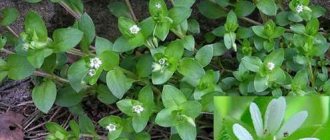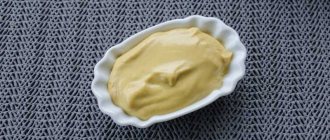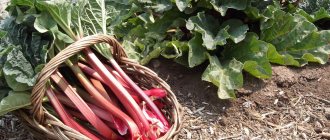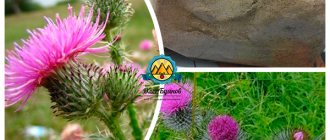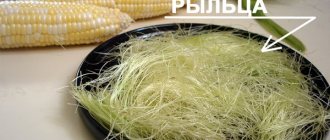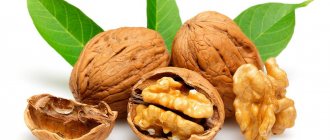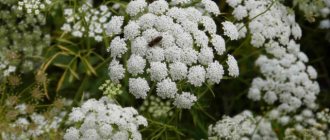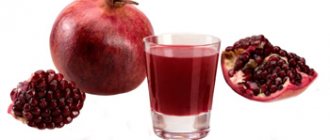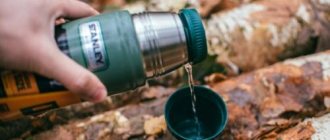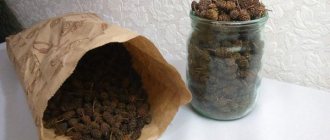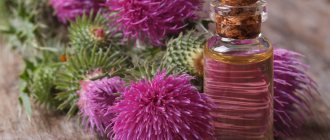general characteristics
Milk thistle (Latin name - silybum) is a flowering plant of the Asteraceae family. The herb is also popularly known as milk thistle, frog thistle, thorn grass, black elecampane, and tartar. According to legend, the plant is capable of expelling evil spirits. Many people hang its flowers in their homes above the front door and use them to make protective amulets.
Now Foods, Silymarin, Milk Thistle Artichoke Dandelion Extract, Double Strength, 300 mg, 200 Vegetarian Capsules
★★★★★
1 492 ₽
Buy at a discount
There are more than 120 varieties of the plant, but the famous types of milk thistle are:
- Milk thistle. Its peculiarity is white spots along the leaves, as if milk had been spilled on them. Hence the name - milk.
- Curly. A thorny weed plant no more than 1 m high has an erect stem. Distributed in Western Siberia, it is distinguished by the absence of spines on the stem of the basket.
- Drooping. The plant reaches 1 m, has an erect, slightly branched stem. There are no thorns on the flowers.
Milk thistle can be found everywhere, but some varieties are grown specifically for medicinal purposes. These include:
- Amulet. Ornamental plant. Has beneficial properties.
- Debut. Contains a large amount of oils.
- Panacea. Tall plant. The yield is average - up to 62 kg of seeds are collected from 1 hectare.
- Boykovchanka. Up to 150 kg of seeds are obtained from 1 hectare. This variety is characterized by a high content of silymarin.
Description of the plant
Milk thistle is a plant of the Asteraceae family. It reaches a height of one and a half meters. The main difference between milk thistle and other plants of the family is the presence of spines that cover the leaves. They have white spots with green color which look beautiful.
Flowering begins in mid-summer. The flowers are pink, rarely white. They are concentrated in spherical baskets. The seeds taste somewhat bitter.
Milk thistle herb
The herb milk thistle is distributed throughout the planet. Prefers sunny areas, fertile soils. It grows quickly in vacant lots and roadsides. In order to obtain raw materials for the production of medicine, large plantations are planted.
Additional Information! It has other names: milk thistle, Maryin tartar, Maryin thorns, silver tartar, Tatar, frogwort.
Main characteristics
The difference between milk thistle and other weeds is the spines, which are located on the stems, leaves and even flower baskets. However, to recognize a weed among others, you need to know what it looks like.
Description
The plant grows up to 1-2 m in height. The stem is straight, branched. The leaves are long but narrow and have spines. The lower ones can reach 55-80 cm, the upper ones are shorter, about 10-15 cm. The leaves are dark green in color, they have white spots.
Below is a photo of a milk thistle plant:
The flowers are solitary, pink (less often white). They sprout from spherical baskets, in which seeds remain at the end of flowering.
Microscopic signs
According to the State Pharmacopoeia of the Russian Federation, the following signs of milk thistle are identified:
- on sections of the achenes there are cotyledons, around them there are sclereids, which are yellow in color;
- the pericarp consists of the following layers - cuticle, parenchyma, etc.;
- the cells of the cotyledons contain fatty oils and aleurone grains;
- there is no stomata in the epidermis;
- the pigment layer contains loose cells filled with brown liquid;
- there are calcium oxalates in the parenchyma;
- fibrous cells of the mesocarp consist of 1-10 rows;
- The main part of the seed is large cotyledons.
Knowing these signs, you can judge the quality of the raw materials.
California Gold Nutrition, Silymarin Complex, Liver Health, Milk Thistle, Curcumin, Artichoke, Dandelion, Ginger & Black Pepper, 30 Vegetarian Capsules
★★★★☆
385 ₽
Buy at a discount
Biochemical composition and beneficial properties
Milk thistle seeds contain more than 400 useful substances:
- vitamins – A, B, C, D, E, F, K;
- minerals – potassium, calcium, magnesium, iron, boron, iodine, chromium, manganese, selenium;
- proteins;
- alkaloids;
- organic acids;
- flavonoids, silymarin;
- saponins;
- resins;
- fatty and essential oils.
Thanks to the content of these active components, milk thistle herb produces the following effects:
- normalizes the functioning of the liver, metabolic processes in it, protects cells from destruction;
- controls the functioning of the gastrointestinal tract, central nervous system, blood circulation and blood pressure;
- has a wound-healing, antitoxic effect;
- promotes tissue regeneration, removal of bile, cleansing the liver of toxins and poisons;
- improves immunity, gallbladder functioning, blood composition;
- reduces inflammation.
The plant is also used to treat severe liver diseases, namely hepatitis, cirrhosis, and fatty degeneration. It has hepatoprotective, choleretic, anti-inflammatory, detoxification, immunomodulatory, antitumor, antioxidant and restorative effects.
From the video you can learn about the benefits of milk thistle:
Milk thistle. Useful properties and contraindications.
Milk thistle herb: its properties and uses
It can be classified as a member of the Asteraceae family. Milk thistle is also often called spotted thistle. The medicinal uses of milk thistle vary, but most commonly it is used to treat diseases of the stomach, liver, or intestines.
Milk thistle has also proven itself in the gynecological field and in the treatment of skin diseases. Often helps with cardiovascular pathologies.
The plant is one- or two-year-old. Its height is quite large, sometimes it can even reach two meters, although most often it does not exceed 150 cm. The stem of milk thistle is erect, quite branched, the leaves can be dark green or light green with frequent pearlescent spots (depending on the place of germination). You can see yellow spines on the leaves of milk thistle.
The inflorescences resemble small baskets of lilac or purple hue. They can reach 6 cm in diameter. After the flower ripens, fruits are formed in a grayish achene, around which spiny leaves also grow. It ends with the so-called “tuft”, which can be twice the size of the achene itself. The seeds have no smell, but they taste bitter.
The plant grows throughout Southern and Central Europe and in the center of Asia. The seeds are the most valuable for medicine, although people have learned to use milk thistle for the most unusual purposes. There is, for example, milk thistle honey.
Seeds usually begin to be collected in August and end in October. In order not to make a mistake with the ripening time, you need to pay attention to the fluff in the achene, which becomes whitish. If you need plant roots , which are also actively used in medicine, then they need to be dug up in the autumn.
Photo of milk thistle:
grass thistle
grass milk thistle
photo of milk thistle seeds
Milk thistle contains many different vitamins, microelements and other important substances. The most basic of them are:
- Silymarin is a substance that is very difficult to find in nature. It helps treat the membrane that envelops the cells of the human body. It also increases the production of bile, improves the process of cell formation, and neutralizes the effect of poisons.
- Various oils help improve cell and tissue regeneration, relieve inflammation, and improve wound healing processes.
- Essential oil – helps normalize the functioning of the central nervous system, increase the secretion of glands in the body, and enhance motor skills.
- A variety of resins - with their help, wounds are disinfected, the overall defense of the body is increased, and bacteria and microbes are neutralized faster.
- Mucus – eliminates the source of inflammation, accelerates healing, and removes phlegm.
- Lignans help speed up oxygen metabolism, remove toxins from the body, and reduce the amount of cholesterol in the blood.
- Flavonoids - with their help you can strengthen capillaries, normalize blood pressure, and stimulate the adrenal glands.
- Saponins – improve the synthesis of corticosteroids in the body, regulate salt and water metabolism, relieve the inflammatory process.
- Organic acids – improve appetite, help in the breakdown of fats, strengthen the immune system.
- Alkaloids – normalize blood circulation and reduce pain.
- Proteins help the body provide itself with antibodies, enzymes and hormones, improve hormonal balance, and take part in the transport of hemoglobin.
- Vitamins (B, K, C, E) - add energy to muscles, help reduce the concentration of uric acid in the blood, help with metabolic processes in tissues, strengthen capillaries.
- Selenium – treats the liver, normalizes the functioning of the thyroid gland, accelerates healing.
Milk thistle can be taken in the form of tinctures, decoctions, teas, powders, tablets, syrups; in addition, it is often added to other medicines. If you see that a medicine contains milk thistle, the instructions for use will tell you how to take it correctly.
When taking seeds, they must be ground before consumption. The daily norm is 20 grams. Please note that you need to take milk thistle seeds before meals . It is necessary to distribute the daily dose throughout the day.
If you want to know how to take milk thistle powder for the liver , then you can make such an infusion in the evening, just fill it with water. Remember to use boiled hot water. Here, too, you should only consume 20 grams of powder. This infusion is taken half an hour before meals to cleanse your body.
How to take milk thistle seeds? Video:
Milk thistle in Russia
To prepare raw materials, you should know where milk thistle will melt. Despite the fact that the plant’s homeland is Southern Europe, it can also be found in Russia.
What it looks like and where it grows
Milk thistle is a wild plant. This herb can be found in fields, gardens, orchards and growing along roads in the Caucasus, Western Siberia and southern regions of Russia.
The picture shows a milk thistle plant during the flowering period:
Thistle occupies large plantations, fills all available space, and prevents other plants from growing nearby.
Time of flowering and seed ripening
Flowering occurs from July to September. As the grass dries, seed pods form. They are used as raw materials, collected from August to October.
Attention! The seeds ripen unevenly and are collected selectively.
The main sign of readiness is the yellowing of the flower basket and the formation of white fluff in it.
Honey plant
Milk thistle is not only a medicinal plant, but also a honey plant. Although honey does not have all the beneficial properties, it is a general tonic. It helps with colds, increases the body's defenses, and can be used as a sugar replacement.
Application in medicine
Although thistle and milk thistle are almost the same thing, in medicine the second variety is used more often. In addition to a huge number of vital substances and vitamins, it contains a rather rare component - silymarin. Its direction is to provide cell membranes, stimulate the process of cell renewal and synthesize protein.
Thistle, like milk thistle, is used for:
- blocking inflammatory processes;
- preventing the influence of toxic components on the body.
All ingredients are obtained from the inflorescences and leaves of plants. Harvesting takes place only in the first phase of flowering. Preparations that are made from substances contained in milk thistle have a certain effect on the human body.
In the cardiological direction:
- ensure high efficiency of the heart muscles;
- contribute to the narrowing of peripheral blood vessels;
- help increase blood pressure in hypotensive patients;
- have hemostatic and bactericidal properties;
- have a beneficial effect on increasing the tone of smooth muscle fibers.
Bulgarian pharmacologists have expanded the scope of use of the plant. In addition to cardiology drugs, they create medicines for asthmatic attacks, skin diseases, etc.
Russian doctors also highly appreciated the plant’s properties as an effective antiseptic. A medicine based on it helps treat purulent wounds. In addition, it is used for cancer and in the fight against tetanus.
How to grow milk thistle from seeds
Grass can be planted on the site. The main thing is to know everything about the growing conditions.
Planting and care
Milk thistle prefers sunny areas protected from the wind. It grows better in fertile soil and does not like stagnant moisture, but overdried soil is also not suitable for it.
Attention! With insufficient watering, milk thistle produces small flowers, and therefore a small number of seeds.
The plant should be sown in May. Before sowing, the soil must be fertilized with rotted manure and rows 3-4 cm deep should be made with a hoe (the distance between them should be 60-70 cm). Then you should sow the seeds, water them and cover them with soil. After 8-10 days, sprouts will appear. It is advisable to thin out the seedlings, since when they thicken, small boxes form. The optimal number of plants in a row should be 9-12 pcs./m.
Diseases and pests
Milk thistle is not susceptible to diseases and pest attacks, so there is no need to take preventive measures to protect it.
Collection and storage
The treatment outcome partially depends on compliance with the raw material procurement technology.
How to collect milk thistle is shown in the video:
Collection, processing and preparation of milk thistle seeds
When and what to collect
All parts of the plant – leaves and roots – can be used for medicinal purposes. But the seeds are the most valuable. They are collected at the end of August and beginning of October, when white fluff appears on the flower baskets.
Note! To extract the seeds, it is recommended to put the baskets in a bag and thresh them with a stick.
The leaves of the grass can be collected all summer. They need to be torn off or trimmed with scissors. The roots should be dug in the fall after the seeds ripen or in the spring.
How to dry milk thistle correctly
The seeds must be sifted through a sieve (to get rid of fluff), then spread on paper in a well-ventilated place, protected from sunlight, for 2 days. Then the raw materials can be collected in a bag.
The roots and leaves need to be crushed, then dried either outside under a canopy or in a drying cabinet at a temperature not exceeding 40-50 ° C.
Storage rules
Seed raw materials should be stored in fabric bags in a dry place with good ventilation. Duration – 3 years. After this period, it is not suitable for consumption, as it loses its beneficial properties. It is recommended to store the roots and leaves in a glass container for no more than one year.
— 42%
Natrol, Milk Thistle, 525 mg, 60 Capsules
★★★★☆
806 ₽ 466 ₽
Buy at a discount
Uses of milk thistle
At first, milk thistle was used only in cooking, but later, thanks to scientific research, the plant was recognized in official medicine. It began to be actively used for the manufacture of medicines.
In traditional and folk medicine
At home, it is possible to prepare a decoction or tea. For example, if you have prepared seeds at home, you can grind them into powder. It should be taken with water. You can germinate the seeds. But it is recommended to eat no more than 7 sprouts per day.
In cooking
For cooking, oil or flour obtained from milk thistle is used. These ingredients are added to salads, cereals, and soups.
Note! It is recommended to use raw materials that have not been subjected to heat treatment.
Milk thistle meal: features and methods of use
Meal is the seed of a plant (in this case, milk thistle), which is ground to obtain a powdery mass. The main feature of this powder is the fact that it is cold pressed, thanks to which vegetable oil is obtained from the seeds.
Fiber, which is contained in milk thistle meal , has an excellent effect on the intestines, cleansing it. In addition, this drug helps to normalize the functioning of the body, thanks to vitamins and biologically active elements. Cleansing the liver with milk thistle will go quickly and without problems if you use milk thistle.
Milk thistle meal has many beneficial properties. Among them are:
- The ability to regulate fat metabolism, regulate the functioning of the central nervous system, organs of vision and skin.
- Improving intestinal motility.
- Restoration, improvement and strengthening of the liver.
- Establishment of the body's defenses against unfavorable environmental factors.
- Improved bile flow.
- Bringing blood pressure back to normal.
- Improving metabolism in the body.
- Removal of radionuclides, waste and toxins.
- Reduces glucose to normal levels.
- Improving kidney function.
Milk thistle is a real miracle cure for the liver, especially if used in the form of meal. If you want to use this plant for medicinal purposes, you must remember that the meal can be used in the amount of 1 teaspoon three times a day. However, remember that it can be used no earlier and no later than half an hour before meals.
You can only drink it with warm water so that the meal has a positive effect on intestinal function. The course should be continued for at least 40 days. After this, you can take a two-week break, and then resume the forty-day course. The frequency of continuations is determined only by the doctor.
Meal can also be used for prevention . But here one teaspoon is taken only once a day, on an empty stomach. The preventive course is established by the doctor, taking into account the individual characteristics of each organism. As a rule, such a course can last from twenty to forty days.
It is also interesting that milk thistle meal can be safely taken even by children (starting from 3 years old), but for them use should only be prescribed by a doctor.
It is recommended to take half a teaspoon twice a day. The powder can be added to children's dishes, as its main characteristics do not disappear.
Milk thistle meal: benefits and harms
No side effects were observed when consuming the meal of this plant. Although some people complained of mild pain in the liver area. If you are going to take milk thistle meal, the indications and contraindications for use must be studied.
So, for example, you cannot immediately take a large dose if the patient has kidney or gallstones. It is best to use the drug gradually and under the strict supervision of your doctor.
Pregnant and lactating women should also use this product with caution. It is not recommended to take it if you have an individual intolerance to the plant.
Other medicines with milk thistle
The best milk thistle-based liver cleanser is a tincture. Among other things, such a medical preparation, which you can easily make yourself at home, will help to better remove bile from the body, eliminate unpleasant pain in the joints, and reduce pain in the liver.
Many people suffering from skin problems, dermatitis, psoriasis, acne, can use special tinctures with this medicinal plant.
Interestingly, such products do not need to be wiped or cleansed. The tincture is taken orally, helping to cope with many problems at the same time.
Decoctions are also made from milk thistle, which help not only with diseases of the liver and pancreas, but also of the kidneys. Some people prefer to use juices, extracts, herbal teas or syrups. The latter can be purchased without problems in pharmacies. Often such drugs are intended for the treatment of hemorrhoids, colitis, heart and respiratory tract diseases.
